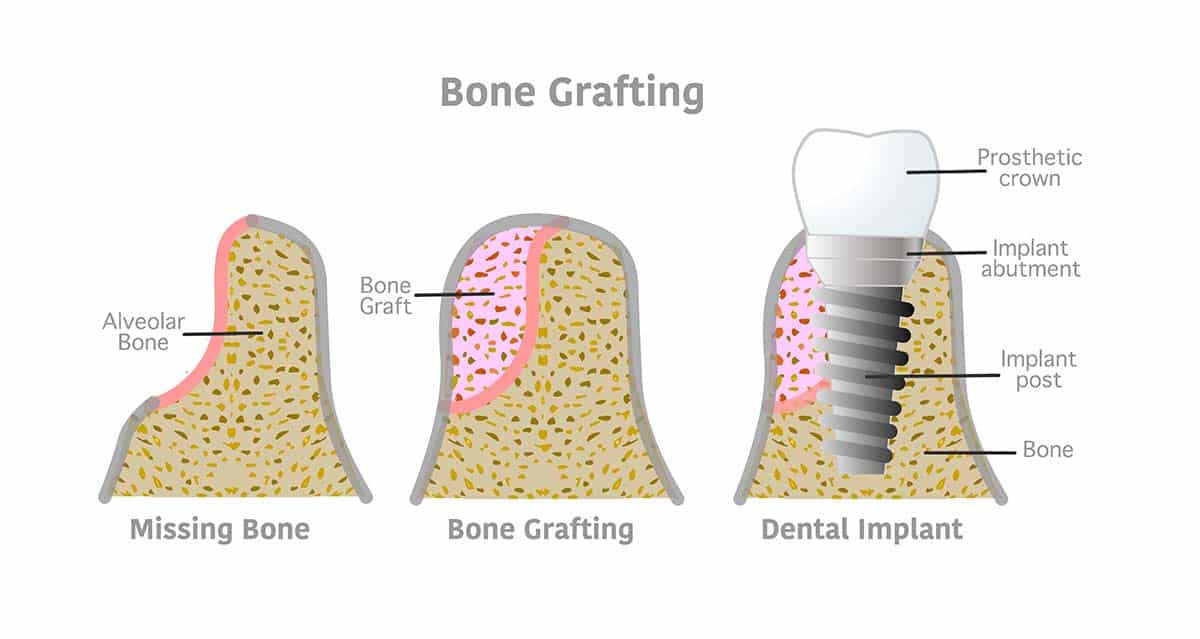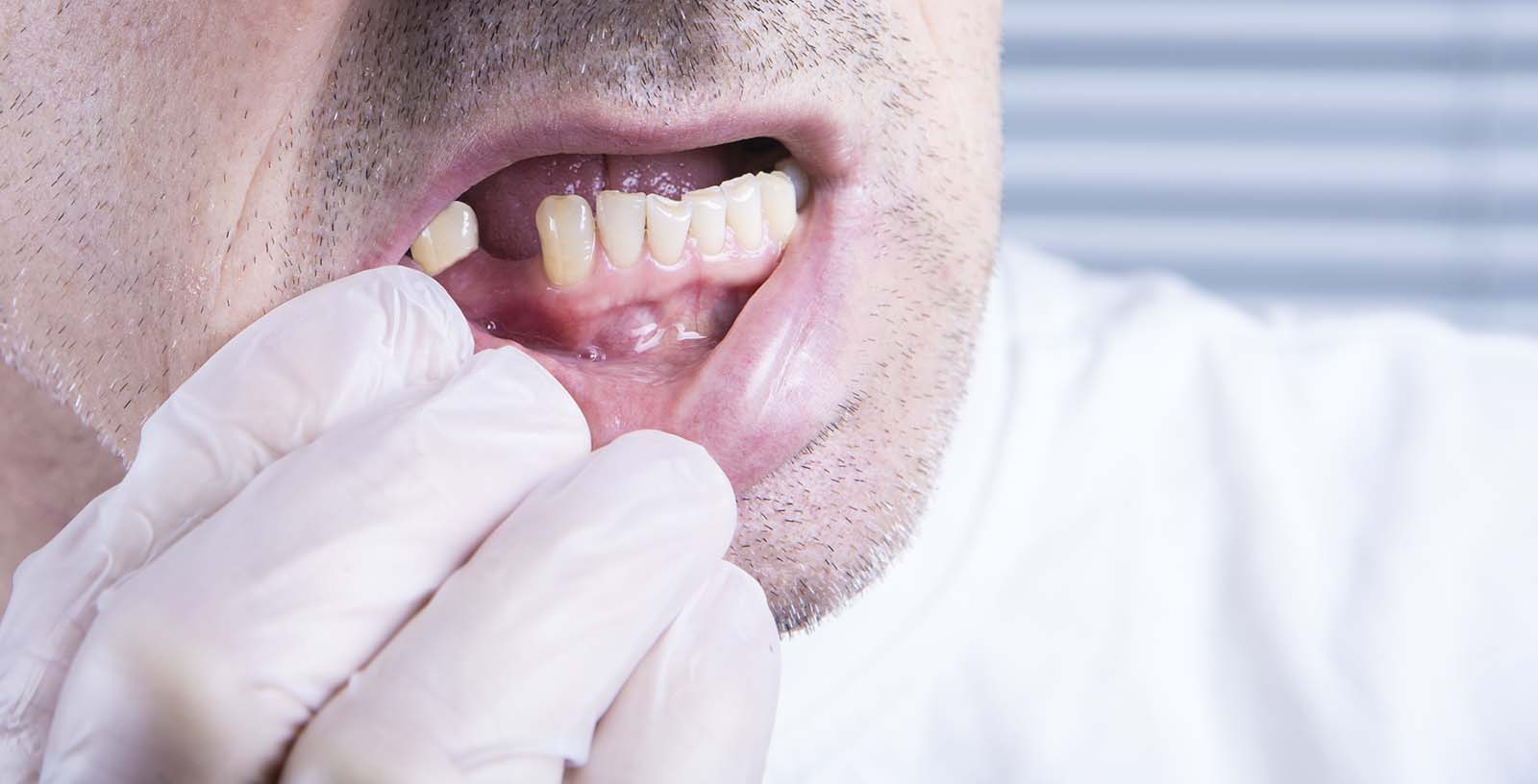Tooth loss is insidious because it’s difficult to detect. A cavity has a way of growing inside your tooth without a lot of noticeable symptoms. Signs of tooth loss are subtle and difficult to detect without a comprehensive dental exam.
The Importance of Early Detection
Most dental problems start off without symptoms. You won’t feel pain or a lot of tooth sensitivity. But early cavity detection is vital to saving your tooth. Dentists should emphasize the importance of dental checkups to detect cavities. Early detection of gum disease as part of a checkup can help save your teeth from further decay and preserve your oral health.
Early cavity treatment is less invasive than late detection. If tooth decay progression worsens, invasive treatments such as root canals or tooth replacement are the only option.
The Link Between Symptoms and Tooth Loss
The early signs of tooth loss are harder to detect. The only way to catch then is through routine comprehensive dental exams. Dental x-rays can reveal certain early warning signs of tooth decay. It begins with a microscopic hole that appears on the enamel of the tooth. Only x-rays or thorough exams can detect this first stage of tooth decay. From there, the problem extends into the dentin, or pulp, of your tooth.
At this stage, you’ll experience significant tooth pain and sensitivity. The reason for this is tooth decay progression. Other signs of advanced tooth decay include halitosis(bad breath), sudden sharp tooth pain, and continuous throbbing pain in the infected area. These are a few of the top symptoms of tooth decay.
Understanding the Anatomy of a Tooth
Tooth Structure and Supporting Tissues
Your tooth is made of two separate structures: the crown and the root. Each have separate functions but interact together to chew and digest food.
The Crown
The crown is the tooth’s outer layer. It is protected by a hardened shell that guards against infection. This shell is made of enamel, which is one of the strongest elements of the human body. Other elements such as dentin and cementum layers comprise the tooth’s crown.
The Root
The root is the meat of your tooth. It forms the inside and is made of the following: pulp, nerves, tissues, and blood vessels. The root stabilizes your tooth by keeping it secured to your gum and jawbone.
Strong, healthy teeth depend on the health of both parts. Good teeth that are well-maintained are beneficial to your overall health.
The Role of Healthy Teeth in Overall Well-being
There are great benefits to good teeth. They’re essential to good food digestion. Healthy teeth can chew and grind food into tiny particles for easy swallowing. You can benefit from healthy teeth in other ways as well.
But the reasons for healthy aren’t limited to your mouth. It’s been proven that healthy teeth are essential for your physical and psychological well-being. Teeth that are healthy are attractive and can boost your personal confidence. Just think of how it feels to have a healthy, beautiful smile you can showcase to others without feeling self-conscious.
Plus, there’s a connection to healthy teeth and Alzheimer’s prevention. The connection lies in periodontal diseaee, which impacts brain metabolism. Consequently, patients with the disease can show signs of memory loss as the brain struggles to retain and process information on a daily basis.
Oral health lifestyle choices begins with daily oral hygiene practices. You should brush your teeth at least twice a day using a soft-bristled toothbrush and fluoride toothpaste. Flossing is also recommend once a day, followed by an antiseptic mouthwash. This helps kill bacteria that causes plaque and results in tooth decay and tooth loss.
Other best practices include routine visits to your dentist for checkups and cleanings. Your dentist can use x-rays to spot cavities. A comprehensive oral exam is excellent for the early detection of gum disease and other related oral issues.
There are ways you can impact healthy teeth on your own. The nutritional impact on oral health isn’t about brushing or exams alone. It’s about what you consume or eat. Foods that are high in acids, starches, and sugars release acids that break down remaining carbohydrates to aid digestion. Unfortunately, they also wear on your teeth. These same elements erode tooth enamel and leave plaque. It later hardens and becomes tartar.
There are certain foods that cause this problem:
- Sugary drinks: Soda, sports drinks, and energy drinks all contribute to tooth decay and loss. Consumption of any of these should be limited as recommended.
- Coffee: Even without sugar, coffee is bad for your teeth. It’s high in acid, which weakens enamel by eroding it. It also has special molecules called tannins, which discolor tooth enamel. If you feel you still need that coffee, consider brushing your teeth immediately afterwards. This may reduce the impact of the acid on your enamel.
- Candy: Again, we’re talking sugar. Hard candies, gummies, and taffy top the list. All of these stick to your teeth and cause decay. Furthermore, nursing a piece of candy slowly allows sugar to linger and create plaque. Anything sour is worse due to acid content. Moderation is advised. There are healthier alternatives to candy, such as apples, which are an excellent source of fiber and can ward off plaque by stimulating saliva.
- Foods high in acid: Your enamel can lose its luster when exposed to acidic or pickled foods. You’ll lose essential minerals that keep your teeth healthy and strong. A full glass of water should clear the acid away.
- Refined carbohydrates: White bread, potato chips, pastries, desserts, white rice, pasta, or anything that has high fructose corn syrup is high in starch. Even artificial sweeteners fall into this category. Starch contributes to plaque buildup over time. You can try whole grain foods as a better alternative.
Enamel erosion prevention begins with consistent dental hygiene practices. If you do consume any of the above, you should follow up with brushing and flossing your teeth immediately. Oral-friendly nutritional choices such as fruits, healthy proteins, and whole grains are better for your oral health and well-being.
Zooming Into Gum Disease
What is Gum Disease?
Also called periodontitis, gum disease is an inflammation of the tissue around your teeth. It spreads rapidly to your bones and disrupts the structure of the bones that surround your teeth. Good prevention practices include brushing your teeth twice daily, regular flossing, and routine dental checkups.
Stages and Severity of Gum Disease
Healthy gums are firm and usually light. Gum disease can sneak its way in without warning. You may notice slight discoloration and bleeding while flossing and brushing. The impact of gum disease on tooth stability comes in four stages:
- Gingivitis: This is the first stage of gum disease. It is characterized by inflammation and gum bleeding during daily oral hygiene. You can reverse the problem with proper care before it morphs into bone loss. Managing tooth mobility and pain are easiest at this stage.
- Mild periodontitis: Bacteria collection forms near the gum line and causes your gums to shrink away from your teeth. At this point, a deep cleaning may be the solution to slowing the spread of the problem. Symptoms of impending tooth extraction are common at this stage.
- Moderate periodontitis: This third stage of gum disease is characterized by a moderate to severe bacterial infection that erodes the roots of your teeth. You’re most likely to develop severe tooth pain and sensitivity. At this point, tooth mobility causes are rooted in worn ligaments and tissues. A dental exam followed by a treatment plan is advised.
- Advanced periodontitis: Tooth loss is severe at this stage. Bones and roots are severely weakened by bacteria trapped inside the gums. If tooth loss persists, a retainer or implants may be necessary.
Connection to Tooth Loss
Symptoms of impending tooth extraction begin in the early stages of gum disease. Regular dental checkups can catch the problem early. By utilizing preventive dental services, you can prevent gum disease before it worsens.
Gum disease progresses into the roots of your teeth. It loosens the roots and bone that hold them in. You may experience halitosis in the later stages of the disease. Good oral hygiene practices and routine exams are a way to stay on top of the problem.
Spotting the Signs of Tooth Decay
Tooth decay is slow and insidious. At first, you may experience no obvious symptoms like tooth pain or tooth sensitivity. Routine dental checkups can uncover the early warning signs of tooth decay.
Causes of Tooth Decay
Tooth decay is a common source of tooth loss. Most people experience tooth decay for the following reasons:
- Poor oral hygiene: Poor oral hygiene increases your risk of tooth decay. Not brushing or flossing properly, not using mouthwash, and not brushing your tongue as recommended all contribute to tooth decay and tooth loss. Ensuring oral well-being through diet increases dental health.
- Age: Your risk of losing your teeth increases with age. This problem persists more with those who haven’t kept up good dental care. The older you get, the more fragile your teeth become. It’s important to step up daily oral hygiene practices. Keeping up with routine dental visits is a must. Managing wear and tear on teeth requires the utmost vigilance.
- Breaks in the enamel: Tooth decay begins with holes or breaks in the enamel. Unfortunately, they’re not as easy to spot because they’re usually tiny. Some cracks may be more obvious in cases of severe tooth trauma. You can detect these tiny cracks by utilizing preventive dental services. In either case, you should visit a dentist.
- Dry mouth: Preventing tooth loss through early detection is vital. Those who suffer from dry mouth lack adequate saliva, which is essential for healthy teeth.
- Bruxism: Bruxism is a condition that involves the grinding of teeth. It’s typically aggravated by stress or anger. Awareness is key to stopping Bruxism. However, this grinding wears your teeth down over time. You can lose your teeth over time. At some point, implants may be necessary. Dental wear preventive strategies can slow the progression of cavities.
- Poor nutrition: Holistic oral health approaches include good nutrition and daily oral hygiene habits. Foods high in sugar, acid, or certain carbohydrates should be consumed in moderation. Even black coffee without sugar should be regulated. This is due to tannins, specific molecules that cause enamel discoloration.
- Genetics: If healthy teeth run in your family, you’re in luck. Routine checkups are still the right thing to do to keep your oral health going strong. However, if your family history yields evidence of dental problems, more caution is strongly advised. Be extra vigilant about your oral health and avoid foods that cause problems with your teeth and gums.
Progression and Identification
Cavities progress over time. They begin with the enamel and penetrate through the dentin, which is directly below the enamel. From there, cavities progress towards the pulp, which is the most sensitive part of a tooth’s structure. Tooth loss prevention strategies begin with an oral exam followed by treatment and intervention.
Intervention and Management
Preventive dental services are vital as part of oral intervention and management. Recommended treatment depends on the stage of decay. It’s possible to treat initial stages with a simple cleaning. But mid- to late-stage tooth decay typically require at least a filling. In some cases, you may need a root canal or oral surgery. There are signs that indicate the severity of a cavity.
Pain: The Body’s Red Flag
Pain in any part of your body is a sign that something is wrong. Dental pain is indicative of an oral problem. The level of recommended treatment depends on the type and severity of pain you feel.
Differentiating Normal and Abnormal Pain
A dental fracture causes pain that’s fleeting, while an infection results in lingering pain. You may experience pus or throbbing at the infection site. You can use ibuprofen for temporary dental pain alleviation. But pain that’s persistent at this stage requires immediate treatment.
Understanding Root Causes
The root causes of tooth pain lie in the root. The nerve surrounding the root is most likely the cause. Irritation or a cavity may be the underlying issue surrounding persistent tooth pain.
There are other possible links to tooth pain. It could be related to your ears or sinuses. Any pain located in the jaw joint may be related to other physical problems such as heart disease. The importance of healthy jawbone is connected to strong teeth. In any case, a preventive dental checkups importance cannot be underestimated.
A recent tooth extraction is another cause of dental pain. Pulp inflammation is the central cause of most tooth pain. Addressing and alleviating dental pain starts with a comprehensive oral exam and x-rays.
Tooth Mobility: Unseen But Underway
Loose teeth happen over time. They can be a hassle, but they can be fixed. Comprehensive oral care in Los Angeles has many treatment options for a loose tooth.
Causes of Tooth Mobility
A tooth that’s disengaged from your gums is a loose tooth. You may notice a bit of wiggling while eating or brushing your teeth. It’s caused by trauma, periodontal disease, pariapical infection, or bad oral hygiene habits. When you notice movement with a tooth, it’s time to call a dentist. Comprehensive oral care in Los Angeles includes a thorough exam and treatment.
Diagnosing and Treating Loose Teeth
Affordable dental care Los Angeles can diagnose and treat a loose tooth. Sometimes, a slightly loose tooth can heal on its own. All you need to do is be vigilant about not using it to bite or chew. Soft foods such as jello may be best during the healing process.
Teeth that are moderately loose, or are loose due to trauma, grinding, or periodontal disease require immediate attention. There are a variety of loose tooth treatment options available. In some cases, a dental splint is applied to stabilizes the tooth by holding it in place. In other instances, tooth removal may be the best option. Your dentist will remove the tooth, deep clean the root and tissue, and replace it with an implant.
The Path From Mobility to Loss
A loose tooth starts slowly. It begins with slight movement when you touch it. It worsens as you eat. Pain develops as the tooth gets looser during chewing or biting. At some point, you may have redness, gum swelling, or bleeding. The gum area surrounding the tooth shrinks further, putting you at risk for tooth loss.
If you start to notice slight tooth wiggling, call a dentist right away. It’s best to catch the problem in its early stages.
Lesions and Abscesses: Unveiling Hidden Threats
Understanding Oral Lesions and Abscesses
Painful mouth ulcers or sores are called Lesions. Some lesions are precancerous and grow somewhere around the mouth. Other lesions are benign and form on your tongue. Cold sores, canker sores, and general inflammation can be painful. These sores are usually shiny or red. Canker sores are tiny and have a ring around a white or yellow center.
Abscesses, on the other hand, are inflammations located in the tooth, gum, or the supporting bone. They usually have pus and are caused by an infection. Bacteria from foods high in sugar and starch put your mouth at risk for an abscess. A comprehensive oral exam is vital to addressing dental abscesses in their early stages.
Impact on Dental Health
Oral lesions and abscesses can be uncomfortable. Ibuprofen helps with oral pain management. The impact of lesions on tooth health is real. Oral lesions and abscesses result in tooth loss if left untreated. If you notice unusual pain or swelling, call a dentist immediately. Recognizing oral lesions early is vital to successful treatment.
Treatment and Management
Abscess and lesion treatment begins with a diagnostic oral exam. Your dentist will use x-rays to determine where these abnormalities are. Your dentist may tap on your teeth to check for abscesses or tooth trauma. They will do a thorough exam of your gums to check for swelling or pus.
Treatment of an abscess involves draining pus around the area. In advanced stages, tooth extraction and replacement may be needed. Mouth lesions usually require a prescription paste to be applied around the area. Dental aftercare instructions include avoiding spicy or salty foods, foods that have acid, and anything hard or crunchy.
Wading Through Wear and Tear
Recognizing Enamel Erosion
Sudden tooth pain and sensitivity are the early warning signs of enamel erosion. Other symptoms include tiny cracks or dents in the teeth, discoloration, and roughness on the surface of your teeth. Innovative tooth replacement options include a variety of dental implant solutions.
Dealing With Dental Fractures
Dental fractures often happen without warning. You can bite something hard and chip a tooth. You may experience sudden pain when biting or chewing. Or, you might feel a sudden sensitivity to heat or cold.
Any chips or cracks are a pathway to cavities. Preventive strategies for chips or dental wear include routine dental exams. Your dentist should tap your teeth to check for sensitivity during the process.
Preventive Strategies for Dental Wear
You can take preventive strategies against dental wear. Most involve making better lifestyle choices. Staying hydrated keeps saliva production going. Saliva contains vital minerals like phosphorus, fluoride, and calcium. Each of these minerals act to protect your enamel and strengthen your teeth. Certain foods or medications may interfere with saliva production. Drinking plenty of water helps boost saliva and keep your mouth healthy.
Conclusion
Our Los Angeles dental implants clinic offers comprehensive dental implant solutions to replace teeth as needed. If your teeth have been severed impacted by chipping, cavities, or oral disease, we can fix them. All it takes is detection.
Reiterating the Power of Early Detection
Early detection is key to a healthy mouth. Routine oral exams can reveal problems like chipped teeth, teeth that are cracked, and periodontal disease. A dentist can catch a cavity in its early stages during a checkup.
Consistent and Conscious Care
Dental care is a daily endeavor. Even good teeth need quality care. It’s important to brush before bedtime to clear your teeth of acids and food particles. Flossing at night can eliminate food stuck between your teeth. A good recommendation is to brush for two minutes in circular motions. This helps reduce plaque buildup and gum disease.
Other prevention strategy is lifestyle choices. Substituting candy with an apple has great benefits for oral heath. Apples have a a special chemical called malic acid, which removes plaque by breaking it down. It’s been speculated that it can also strengthen and whiten your teeth. Other fruits such as strawberries have antioxidants that guard against harmful bacteria and protect gum health.
Frequently Asked Questions
1. How do I know if I need an emergency tooth extraction?
Emergency tooth extraction symptoms include severe swelling or pain, an injured jaw, or teeth that are knocked loose. These situations typically call for emergency tooth removal and replacement.
2. What are the early warning signs of gum disease?
A comprehensive dental exam is an excellent method for identifying early gum disease signs. Some symptoms include plaque buildup, gum discoloration, and mild discomfort. Your gums may be a darker pink or purple at the beginning stage.
3. Root canal vs. tooth extraction: What’s the difference?
A root canal is a procedure that protects your tooth while treating an advanced cavity. A tooth extraction is a complete removal of a tooth from your mouth, which is typically replaced with an implant. Our Los Angeles clinic offers all on X dental implants solutions.
Additional Resources
Learn more about lifestyle changes and their impact on your oral health. For more information on treating gum disease, visit the Cleveland Clinic website.















